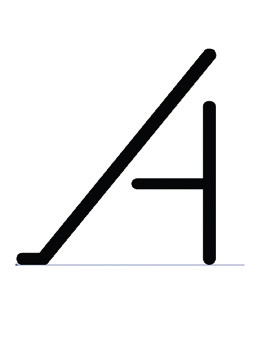Projection mapping comes of age
Projection mapping enables you to grab people's attention by moulding reality. So what does it actually involve?
Savvy consumers might be numbed to traditional methods of grabbing their attention, but for many, the novelty of having their physical surroundings transformed in front of their eyes is yet to wear off. Done properly, projection mapping enables you to do just this – mould reality like putty in your hands.
“When used on existing architectural structures it can change them and take you on a journey in a beautiful, site-specific way,” enthuses Tim Bird, creative director at Knifedge, a digital agency that works across theatrical set design, film, animation and live events – spanning everything from Broadway shows to rock concerts and sporting events.
Bird recalls a very early foray into what could be called ‘mapped projection’, in Norwich Cathedral back in 1999: “The setup was basic in the extreme – VHS video players, lots of gauze and lengthy negotiations with the dean,” he chuckles. “These days, projection is brighter and more affordable, and media servers make playback much more straightforward.”
Associated technology has developed very rapidly in the last few years in particular, and agencies such as Projection Advertising have begun to specialise in the field. The London-based company started as what account manager Emily Gibson dubs a “guerrilla production outfit” in 2005, and first started to experiment with projection mapping three years ago. The company has since grown into one of the UK’s leading experts, with a roster of clients including Coca-Cola, Nokia, Disney, Carlsberg and even Beyonc.
“We’ve recently started gearing projections towards interactivity,” reveals Gibson. “Last year we worked with Grey for Sensodyne and created an accelerometer-loaded punchbag that enabled event-goers to test their strength against the projection. The harder they punched, the more of the video-mapping sequence was revealed.”
The technical learning curve is pretty steep: besides After Effects CS5.5, Projection Advertising makes use of 3D animation package Houdini and high-end rendering and compositing tool Derivative TouchDesigner, not to mention plenty of render farms to output the necessary visuals. Besides a strong light source – usually a powerful projector or LED panel – other hardware, according to Bird, will include a media server; a control mechanism, often a lighting console, to co-ordinate proceedings; and of course a complex network of cables. “Ahead of setting up, you need to consider the physical design – making it from scratch, or understanding what’s already there using CAD software and models,” he explains. “Then there’s content design, generally using Photoshop and After Effects; content creation, using film-making, animation and matte-painting techniques; and pre-visualisation. We use a lighting pre-vis system called ESP.”

A recent Knifedge project integrated projectionmapping technology with the stage for a production of the musical Sunday in the Park with George, with projected animation enhancing the physical scenery. “We collaborated closely with the set and costume designer, lighting designer, sound designer and choreographer to weave the projection into a holistic piece of storytelling,” Bird explains. “The key to success is close collaboration between all involved.”
Bird advocates planning ahead as far as possible: “If a project waits until everything else has been decided, and then tries to bolt on projection, the result is always an unhappy one,” he warns. “It may work up to a point, but only through great pain and inhuman working conditions. Storytelling is the most important element, even if the story is very simple – gimmicks for the sake of it usually look like gimmicks for the sake of it. And if you’re outside, prioritise getting the brightest projectors you can.”
Dutch studio NuFormer uses Barco projectors, packing up to a staggering 30,000 ANSI lumens in brightness – six times more powerful than standard boardroom fare. These are often combined with multi-screen digital presentation system Watchout, and a Grass Valley Turbo digital disc recorder. Visuals are created in Cinema 4D and After Effects.
“Besides projectors, we need to hire an entire crew for the technical operation,” reveals Rob Delfgaauw, who points out that as the equipment is set up a couple of days before the event to allow for rehearsals, security and insurance both add up too.

Daily design news, reviews, how-tos and more, as picked by the editors.

The Creative Bloq team is made up of a group of art and design enthusiasts, and has changed and evolved since Creative Bloq began back in 2012. The current website team consists of eight full-time members of staff: Editor Georgia Coggan, Deputy Editor Rosie Hilder, Ecommerce Editor Beren Neale, Senior News Editor Daniel Piper, Editor, Digital Art and 3D Ian Dean, Tech Reviews Editor Erlingur Einarsson, Ecommerce Writer Beth Nicholls and Staff Writer Natalie Fear, as well as a roster of freelancers from around the world. The ImagineFX magazine team also pitch in, ensuring that content from leading digital art publication ImagineFX is represented on Creative Bloq.
